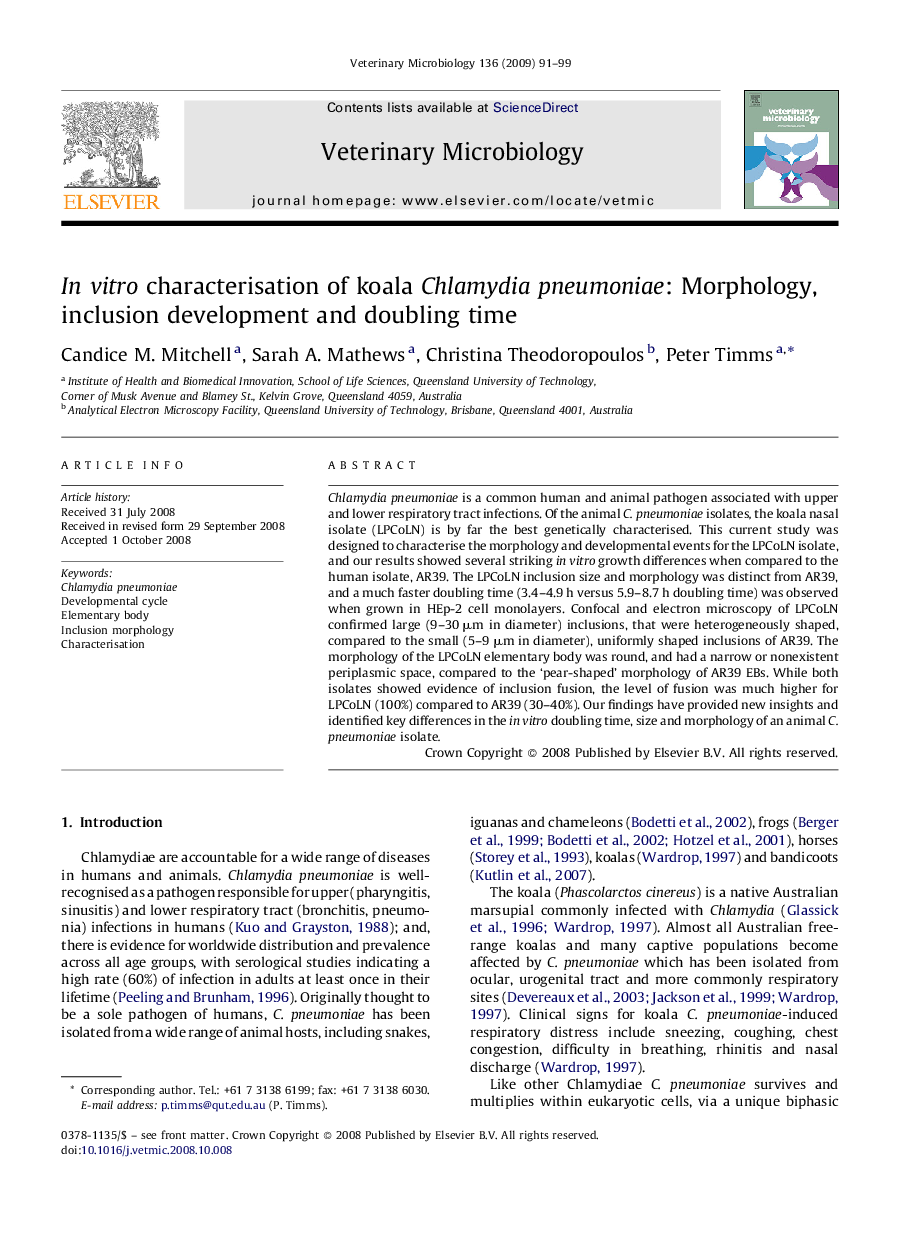| Article ID | Journal | Published Year | Pages | File Type |
|---|---|---|---|---|
| 2468192 | Veterinary Microbiology | 2009 | 9 Pages |
Chlamydia pneumoniae is a common human and animal pathogen associated with upper and lower respiratory tract infections. Of the animal C. pneumoniae isolates, the koala nasal isolate (LPCoLN) is by far the best genetically characterised. This current study was designed to characterise the morphology and developmental events for the LPCoLN isolate, and our results showed several striking in vitro growth differences when compared to the human isolate, AR39. The LPCoLN inclusion size and morphology was distinct from AR39, and a much faster doubling time (3.4–4.9 h versus 5.9–8.7 h doubling time) was observed when grown in HEp-2 cell monolayers. Confocal and electron microscopy of LPCoLN confirmed large (9–30 μm in diameter) inclusions, that were heterogeneously shaped, compared to the small (5–9 μm in diameter), uniformly shaped inclusions of AR39. The morphology of the LPCoLN elementary body was round, and had a narrow or nonexistent periplasmic space, compared to the ‘pear-shaped’ morphology of AR39 EBs. While both isolates showed evidence of inclusion fusion, the level of fusion was much higher for LPCoLN (100%) compared to AR39 (30–40%). Our findings have provided new insights and identified key differences in the in vitro doubling time, size and morphology of an animal C. pneumoniae isolate.
